[Science news] - Exploration of vegetable fats and oils in the drug collection of Meise Botanic Garden
In the economic botany collection of Meise Botanic Garden, a very special collection has been unearthed and scrutinized. It involves 240 jars of fats and oils dating from the end of the 19th century. No less than 120 plant species lead us to the most diverse areas of origin but also to world exhibitions, botanical museums, pharmacists and candle factories of the past. Already then, this vegan raw material occupied an important place as kitchen grease, medicine, care product, candle wax, lamp oil, soap and fuel.
Vegetable fats and oils are mainly extracted from seeds and to a lesser extent from pulp. Linseed, palm and palm kernel oil, cocoa butter and shea butter are among the classics. Others such as Mexican poppy and desert date oils offer future prospects as biocides against nematodes, cockroaches and termites, or biofuel.
A second category are the oils obtained by distillation of mainly seeds, flowers and leaves. These are essential oils, also called volatile or aromatic oils. The collection includes the well-known fragrances and aromas of ylang-ylang and neroli, eucalyptus, patchouli and mint, and sandalwood. But also bergamot, petit grain and curaçao, as well as absinthe, ginger, chamomile, caraway, niaouli and cajeput are contained in the small vials.
Stored in fine glassware, this historic collection is a delight to the eye. It also offers the forgotten raw materials on a tray for further innovative research.
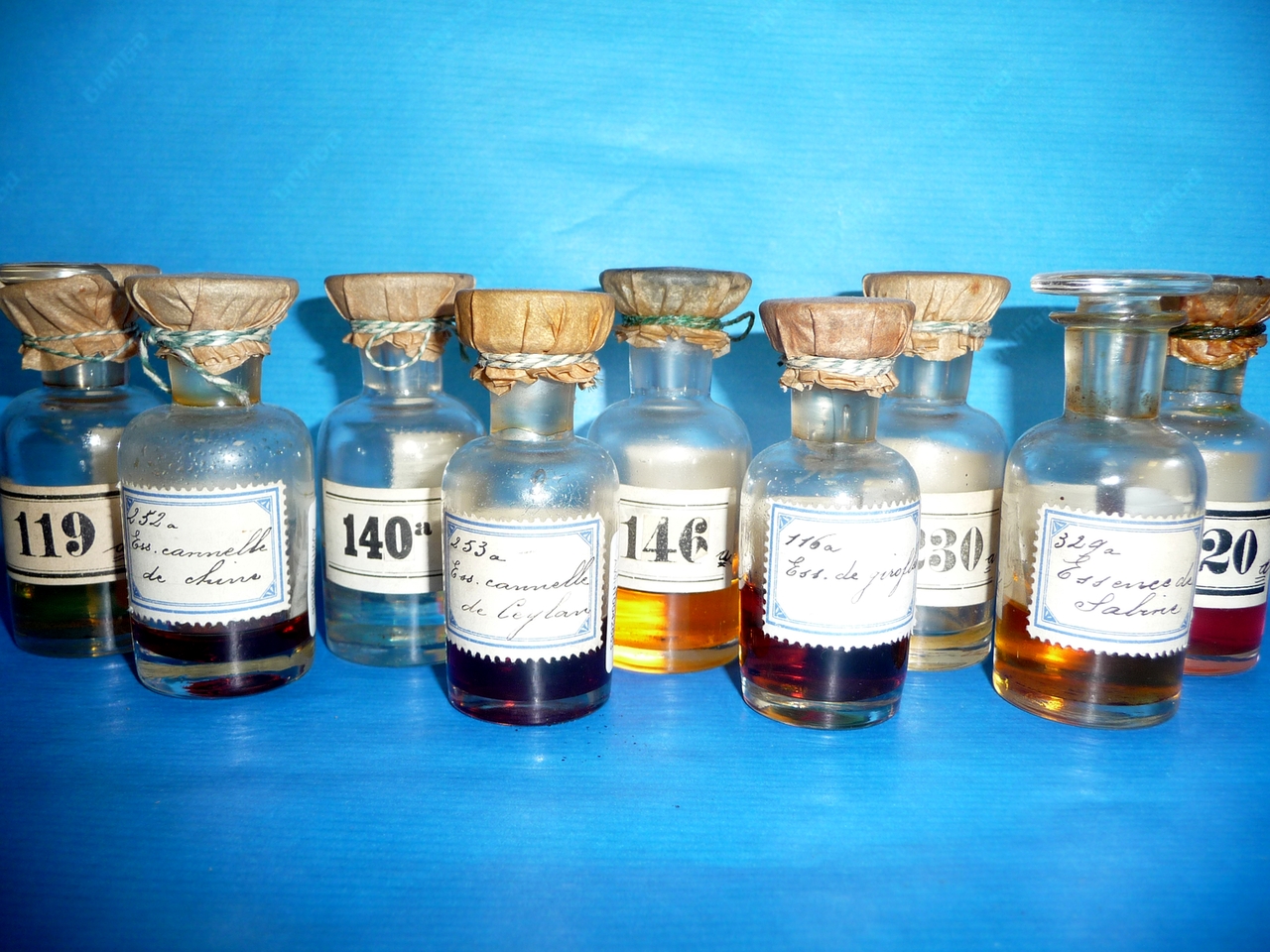 |
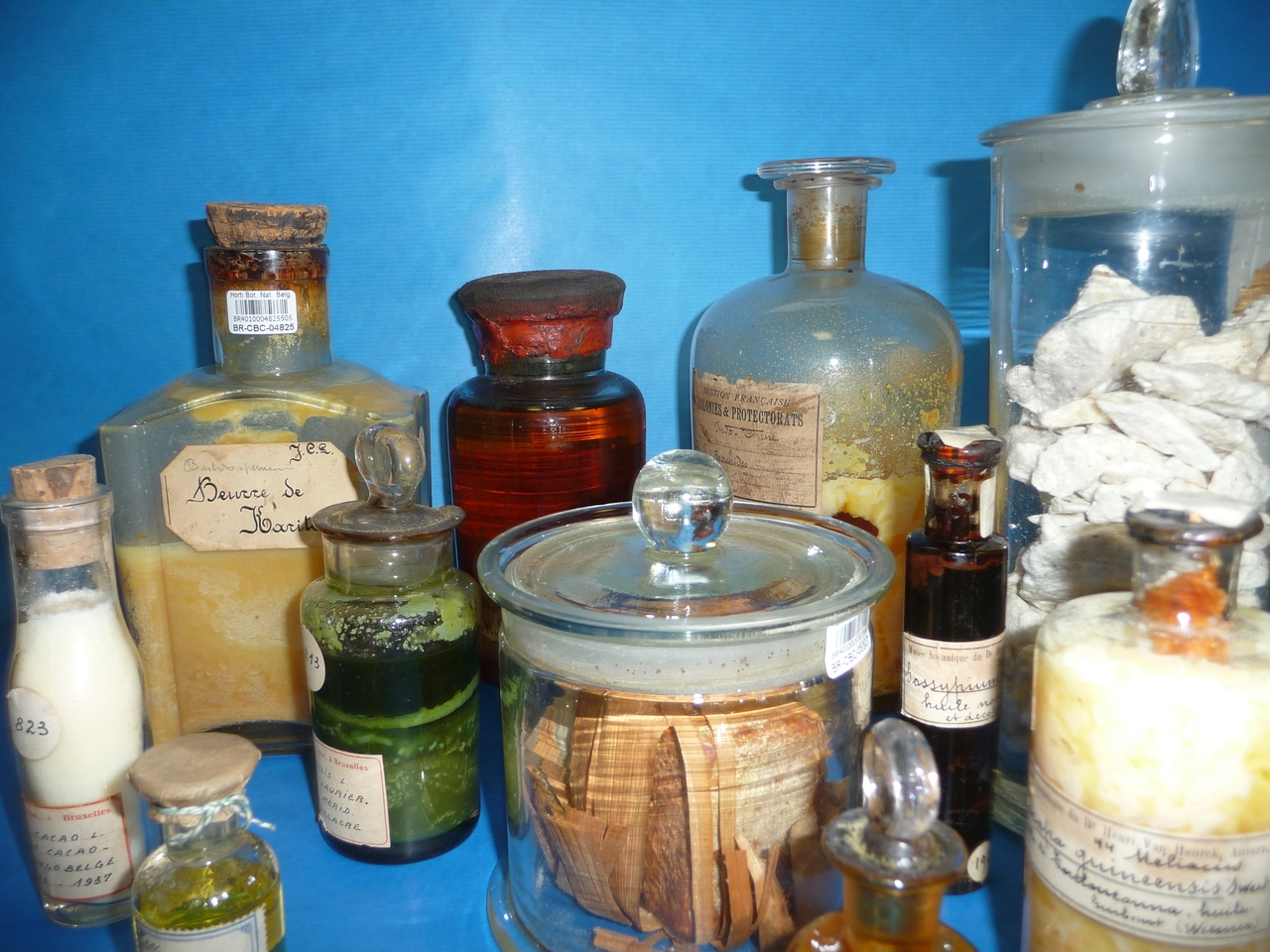 |
| Essential oils | Eye-catchers from the drug collection of the past including green bay oil, square-packed nutmeg butter and white lumps of illipé, showing the rich variety of fats in firmness, formulation, colour and container |
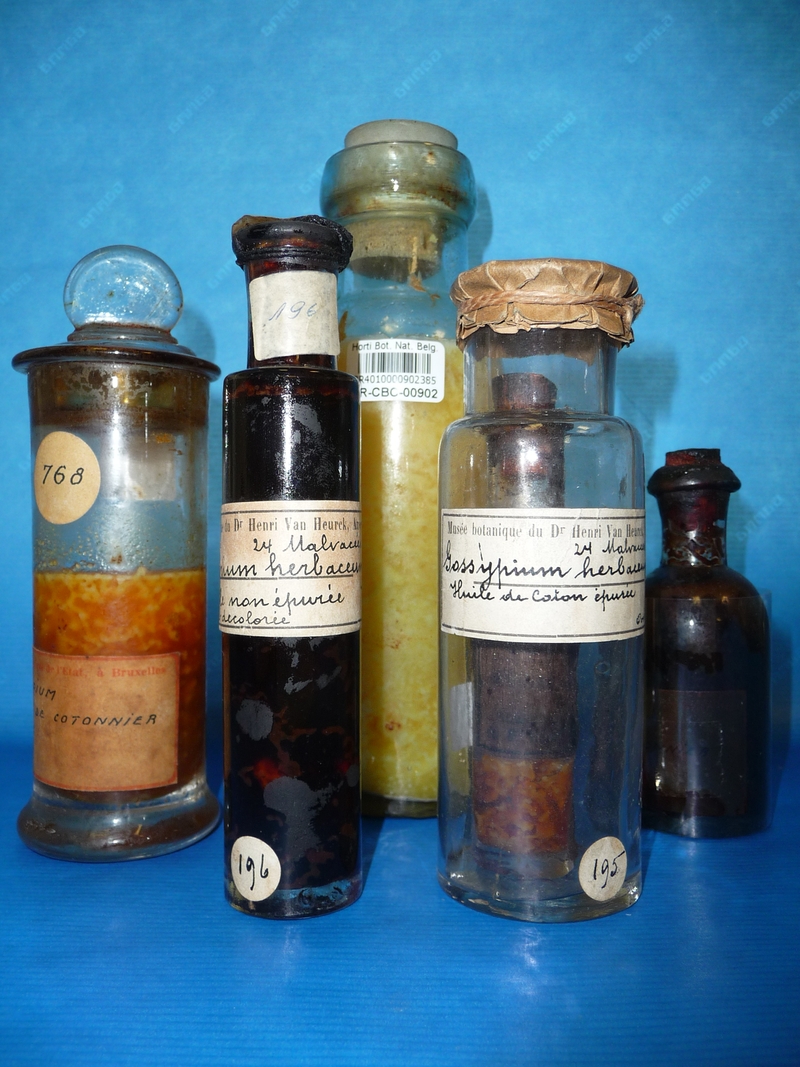 |
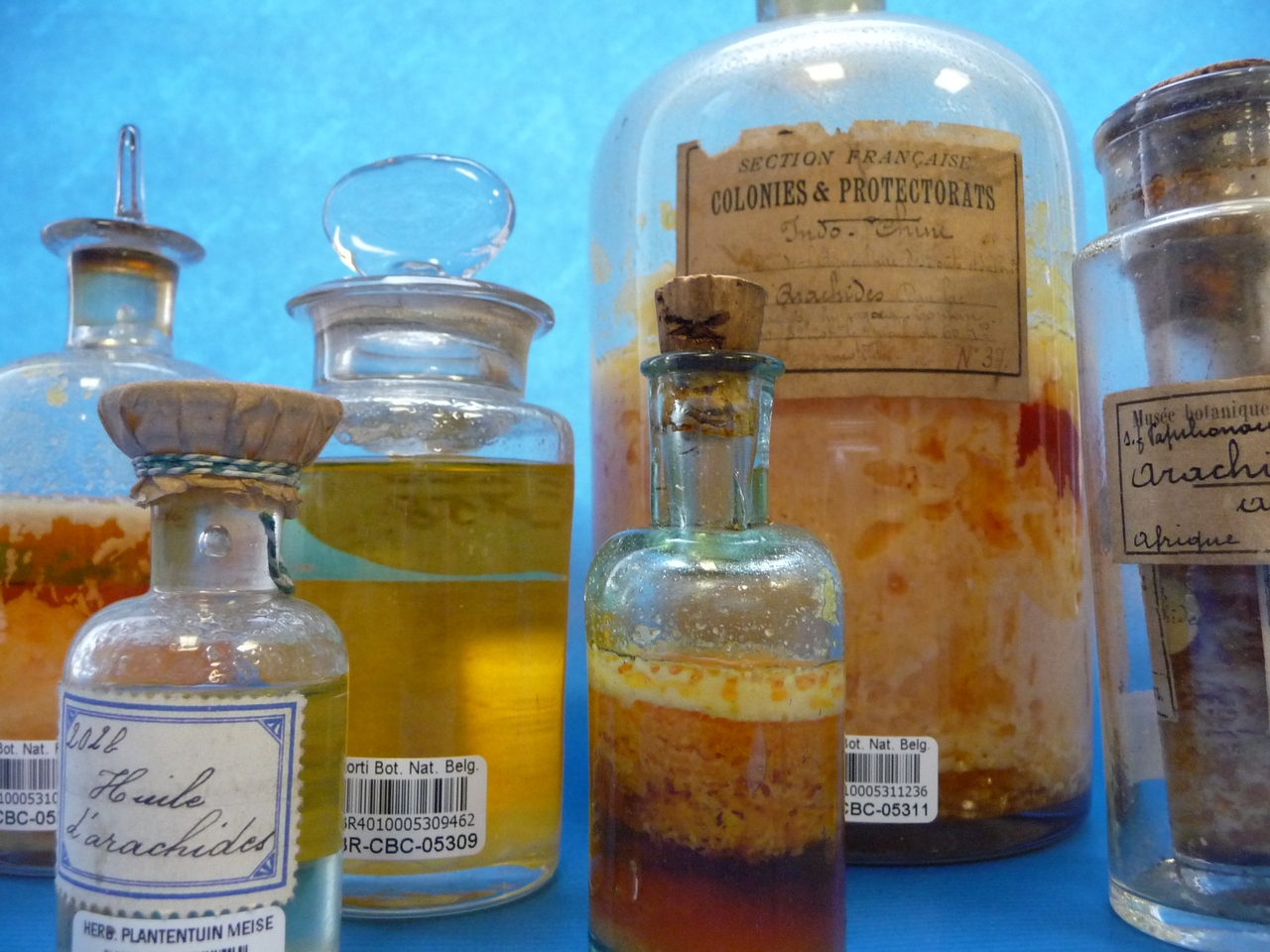 |
|
Cotton-seed oil: the crude pressed oil turns dark due to the presence of the toxic gossypol. Purified oil provides cotton margarine and is also used in soaps, canned fish, cosmetics and pharmaceuticals.
|
Groundnut oil: the refined oil is clear, yellow and suitable as frying oil. Older oil - which precipitates as fat – was used to be made into peanut margarine; oil from the second and third pressings gave fuel and huile de rabat, from which soap was made.
|
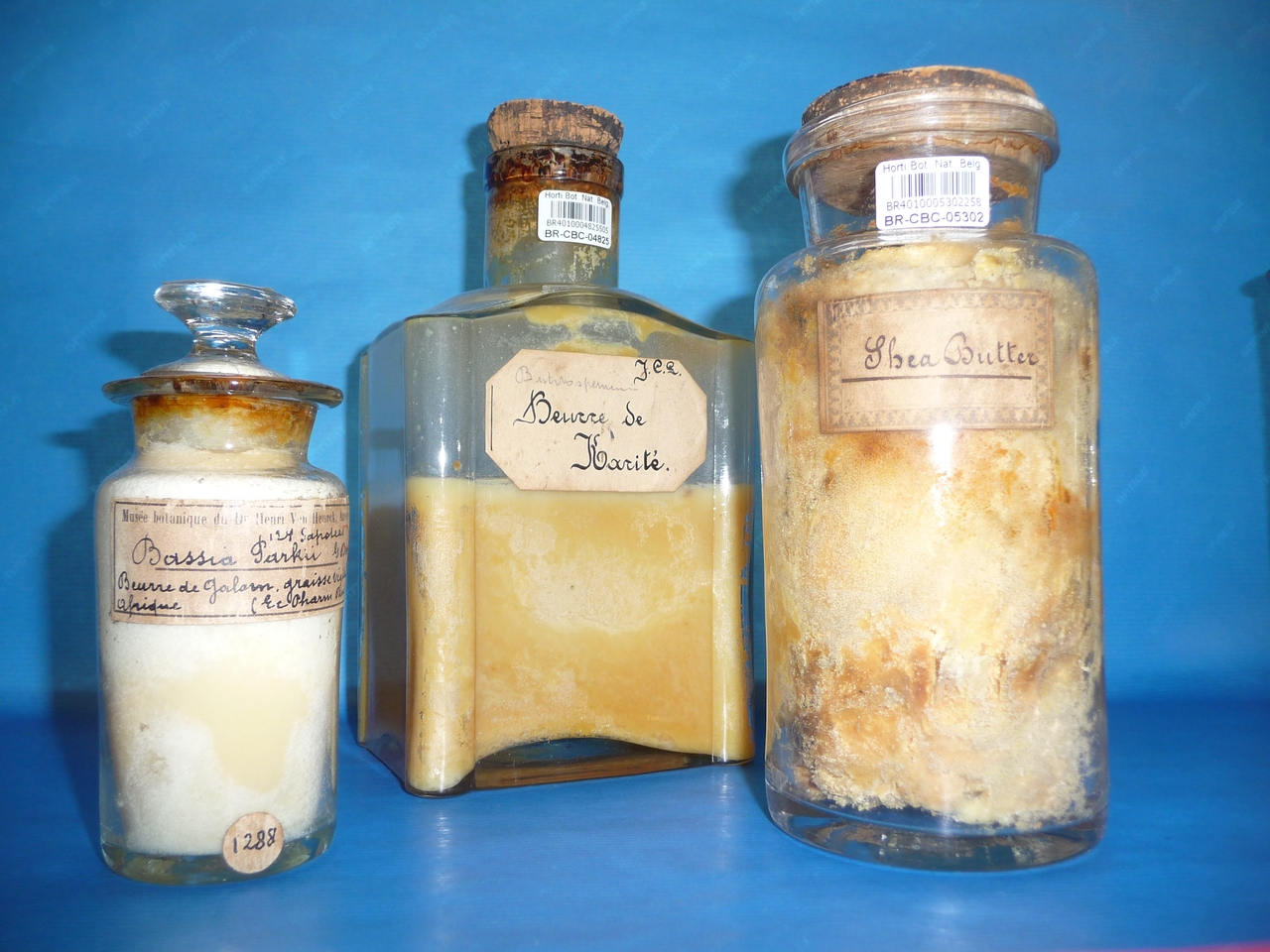 |
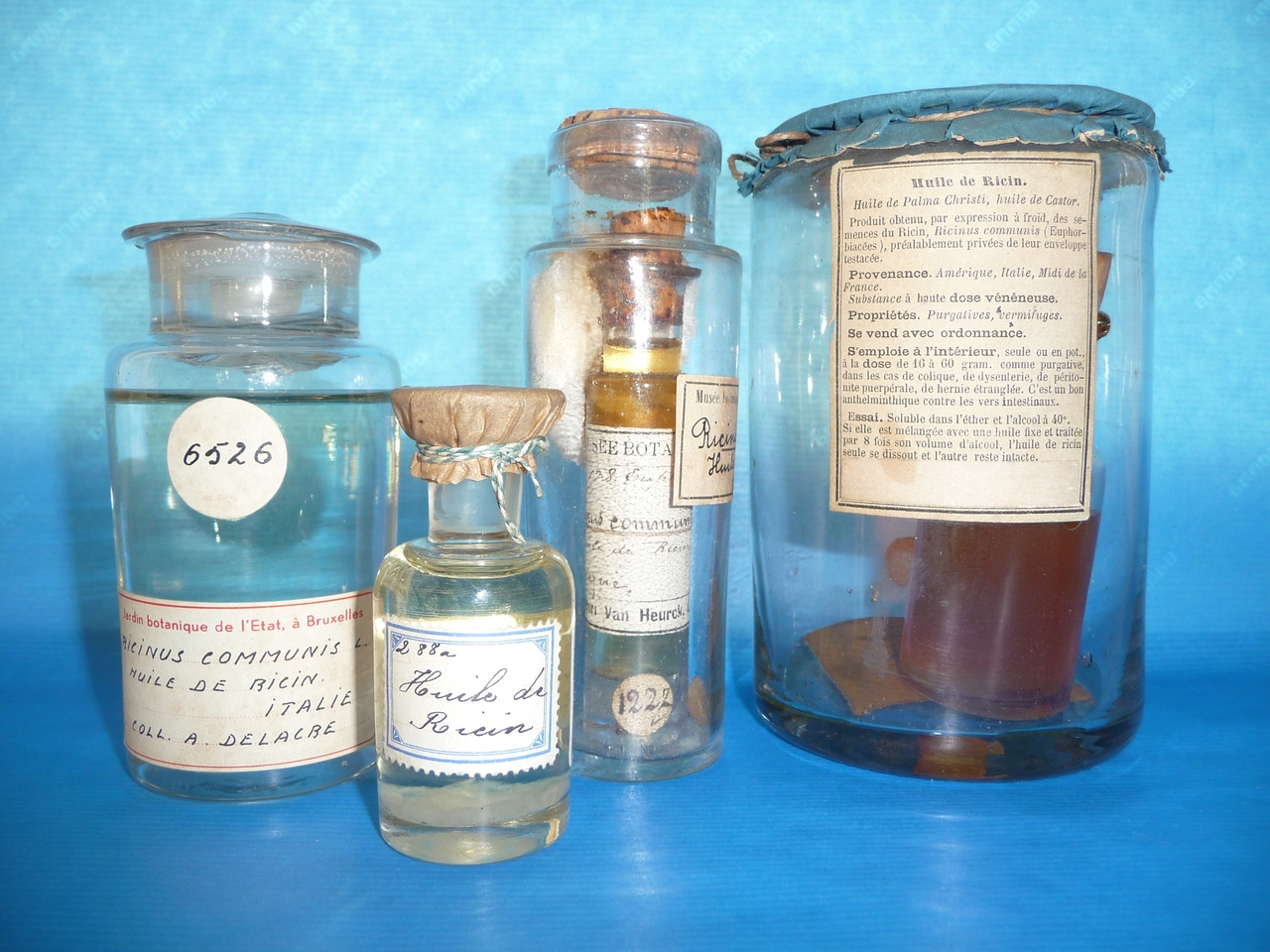 |
| Shea butter is a white to yellowish, granular fat obtained by cooking seeds from the West African shea tree. This butter is staple in food, cosmetics and pharmaceuticals. | Castor oil is an almost colourless seed oil. Refined -and free of the toxic ricin- it works therapeutically (e.g. as a laxative, in eye drops) and is applicable in hair care, as lubricating oil of engines and as brake fluid. |



